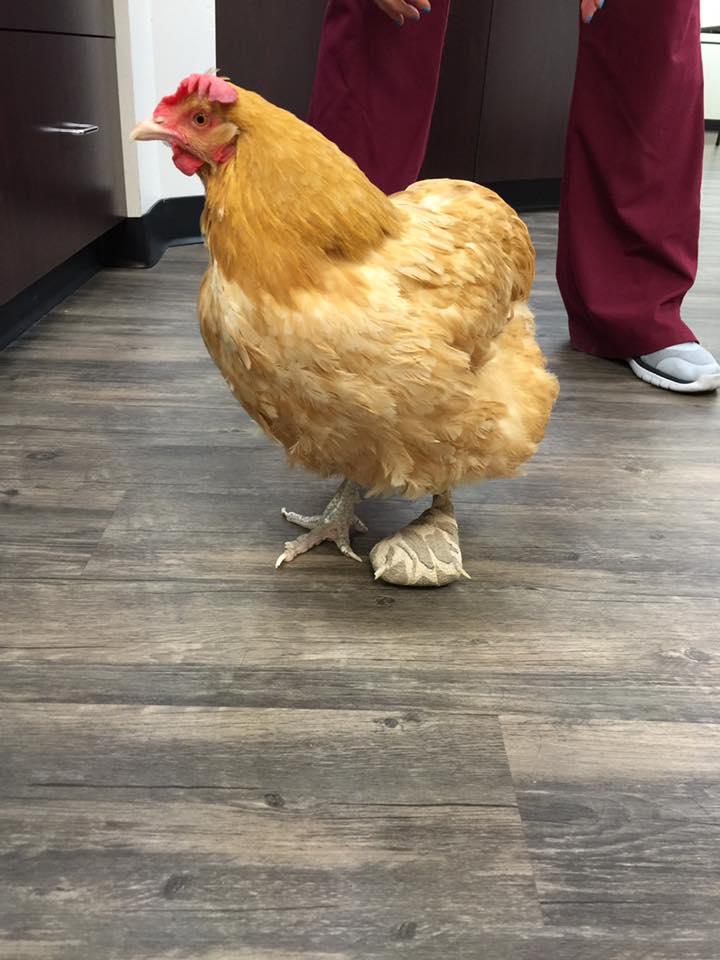|
Chicken & Duck Care
Offered at Little Critters Veterinary Hospital

Pet Chicken Owner Care Guide: Common Diseases, Avian Influenza, and Parasites
Introduction
Keeping chickens as pets has increasingly gained popularity due to their social nature, low maintenance, and the fresh eggs they provide. However, pet chicken owners must be well-informed about common diseases, parasites, and potential risks like avian influenza to ensure the well-being of their flock. This guide aims to educate you on these topics.
Basic Care
- Feeding: Provide a balanced diet that includes grains, fruits, and vegetables.
- Water: Always ensure fresh, clean water is available.
- Shelter: Coops must be clean, well-ventilated, and predator-proof.
- Exercise and Socialization: Chickens are social animals and enjoy foraging and roaming in a secure environment.
Common Diseases
- Marek's Disease: A viral disease causing paralysis. Vaccination is highly recommended.
- Coccidiosis: A parasitic disease affecting the digestive system. Look out for symptoms like bloody stool and lethargy.
- Respiratory Diseases: These can range from mild colds to severe conditions like Infectious Bronchitis. Always isolate sick birds and consult a veterinarian for diagnosis and treatment.
Avian Influenza
This viral disease is highly contagious and can be fatal. Outbreaks often lead to culling of entire flocks to prevent spread.
- Symptoms: Coughing, sneezing, and respiratory distress. In severe cases, sudden death.
- Prevention: Keep your flock isolated from wild birds and ensure biosecurity measures like disinfecting equipment and clothing.
Parasites
- Lice and Mites: These external parasites can cause severe discomfort and may lead to anemia. Regular inspection and appropriate treatment, such as dust baths or medication, are essential.
- Internal Parasites: Worms can affect the digestive system. De-worming is generally done twice a year, but consult your veterinarian for a specific regimen.
Best Practices for Disease Management
- Regular Veterinary Check-ups: Routine veterinary exams can catch potential issues early.
- Quarantine New Birds: Always quarantine new additions to your flock for at least 30 days.
- Hygiene: Clean coops and change bedding regularly to minimize disease spread.
Conclusion
Responsible chicken ownership involves more than just basic care. Being aware of common diseases, the risks of avian influenza, and potential parasites equips you with the knowledge to provide optimal health for your chickens. Consult your veterinarian for individualized medical advice and preventive care.
Sincerely, Dr. Patt
Little Critters Veterinary Hospital
1525 N. Gilbert Rd, Suite C-101, Gilbert, AZ 95234
(480) 696-7744
www.littlecrittersvet.com
Feeding Chickens:
Introduction
Proper nutrition is a cornerstone of pet chicken care, and a balanced diet ensures that your hens are healthy, productive, and content. Feeding layer crumbles to laying hens is a common practice, offering a convenient and balanced dietary option. This section focuses on the nuances of feeding layer crumbles and other dietary considerations for pet chickens.
Balanced Diet for Chickens
A balanced diet for chickens should include a mix of the following:
- Proteins: Protein is essential for growth, egg production, and feather health. Aim for feeds with a protein content of 16%-18%.
- Carbohydrates: Grains like corn, barley, and oats serve as a good source of energy.
- Fruits and Vegetables: Fresh produce should be offered in moderation and should never replace commercial feeds.
- Vitamins and Minerals: Essential for various bodily functions, these are generally included in commercial feeds.
- Water: Fresh, clean water should always be available.
Layer Crumbles for Hens
Layer crumbles are specifically formulated to meet the nutritional needs of laying hens, generally between 18-20 weeks of age and beyond.
- Nutritional Content: These crumbles contain a balanced blend of protein, carbohydrates, and essential vitamins and minerals.
- Calcium: They are high in calcium to support strong eggshell formation.
- Convenience: The crumble form is easy for hens to consume and results in less wasted feed compared to other forms like pellets or mash.
Feeding Guidelines
- Portion: Offer approximately 1/4 to 1/3 pound of layer crumbles per hen per day.
- Supplementary Feeds: While layer crumbles are complete feeds, offering grit for digestion and oyster shells for additional calcium can be beneficial.
- Treats: Limit treats like fruits and vegetables to no more than 10% of their daily caloric intake.
- Changing Feeds: If transitioning from a different type of feed to layer crumbles, do so gradually over a week to avoid digestive issues.
Points to Remember
- Freshness: Ensure that the layer crumbles are fresh and free from mold or contaminants.
- Storage: Store in a cool, dry place and keep it sealed to maintain quality.
- Water: Always provide clean water, as water intake is directly correlated to feed intake and overall health.
Conclusion
Feeding your chickens a balanced diet, with an emphasis on layer crumbles for laying hens, will significantly contribute to their well-being. Always follow the manufacturer's guidelines on the feed packaging and consult your veterinarian for more tailored advice.
Nutrition is a complex topic, and it's crucial to adjust the feeding regimen according to the individual needs of your flock. Regular veterinary check-ups can help ensure that you are meeting these needs appropriately.
|